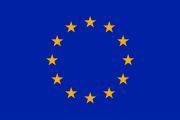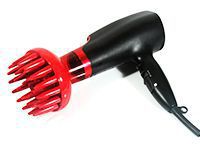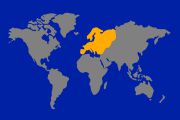What to pack for Europe and what to expect - the best power adapters for your phone, hairdryers and other electronics with guides to European rail, airports, languages and currency.
This purpose of this guide is to explain to travellers visiting Europe what to expect so they can prepare for a trip. Power outlets differ throughout the continent with 8 unique types of plug sockets in Europe along with voltages ranging from 110 to 250 volts, therefore this will affect if hairdryers or hair straighteners work in Europe. Europe is split across over 50 countries; each with it's own different set of standards - therefore it is recommended to read the individual guides for the exact European country for more specific information.
Travellers wishing to use a cell phone in Europe can reference specific charging instructions by European country and mobile phone, highlighting if their charger works in Europe, find a suitable charger and understand the risks behind using the wrong charger. Travellers to Europe can avoid high airport taxes by choosing to fly to one of top 10 cheapest airports in Europe then travelling across Europe by rail. Different countries in Europe use different currencies, not all destinations will accept the Euro therefore it is advisable to research which currencies are used before converting dollars to Euros.
Cell phones in Europe
.jpg)
Tourists in Europe
Can I use my phone in Europe?
Using a phone in Europe is dependent on if your cell phone carrier offers roaming, your cell phone plan and if you have mobile roaming enabled. Most countries in Europe have modern cell phone networks available so as long as you have enabled mobile roaming in your phone settings you will be able to use your cell phone. If your cell phone is unlocked then you can use a local SIM card which will allow much cheaper call, text and data rates than expensive roaming charges.
Can I charge my phone in Europe?
Charging a cell phone in Europe will depend on which country you are visiting as there are a number of different power standards used on the continent.
Select from the following list of countries for full details on the power outlets being used along with recommendations for the appropriate power adapters and instructions for charging specific cell phones, tablets and other travel devices in that destination:
Europe
- Albania
- Andorra
- Armenia
- Austria
- Azerbaijan
- Belarus
- Belgium
- Bosnia
- Bulgaria
- Croatia
- Cyprus
- Czech Republic
- Denmark
- England
- Estonia
- Faroe Islands
- Finland
- France
- Georgia
- Germany
- Gibraltar
- Greece
- Guernsey
- Herzegovina
- Hungary
- Iceland
- Ireland
- Italy
- Jersey
- Kosovo
- Latvia
- Liechtenstein
- Lithuania
- Luxembourg
- Macedonia
- Malta
- Moldova
- Monaco
- Montenegro
- Netherlands
- Norway
- Poland
- Portugal
- Romania
- Russia
- Saint Martin
- San Marino
- Scotland
- Serbia
- Slovakia
- Slovenia
- Spain
- Sweden
- Switzerland
- The Isle of Man
- The United Kingdom
- Ukraine
- Wales
Cell phone chargers for Europe

European Union flag
Do I need a converter for my phone in Europe?
A majority of modern cell phones are charged using a USB cable, therefore all that will be required is a low cost USB charger which is compatible with the local power supply and fits the correct outlet type. You can use your existing charging cable with a USB charger suitable for that country.
Will my phone charger work in Europe?
This depends on where you are travelling from and where you will be attempting to use the phone in Europe. If the country where the phone originated from shares the same type of power outlet and voltage as the destination then the existing phone charger should work. However, this is not without risk as some countries are susceptible to an unstable power grid which can create damaging fluctuations in power.
What are the dangers of using the wrong mobile phone charger in Europe?
It can be a costly mistake for travellers to assume their domestic charger will work abroad even though the wall outlet looks like it will accommodate it. There is a risk that certain countries in Europe use different and unstable voltages with similar shaped yet incompatible power outlets to the ones from their home country. Fluctuations in voltages have the potential to permanently damage chargers and delicate phone circuitry from power surges, while loose fitting plug pins with poor connections can cause sparking. Using a 2 pin plug in a similar sized 3 pin power outlet may appear to work however there is no earth connection leaving the phone ungrounded and further prone to surges.
With the reliance of smartphones being used for holiday photos, emails and social media the inconvenience of being abroad without a phone might spell disaster for some vacation and business trips. Repairing or replacing a cell phone whilst abroad can prove costly therefore it is better to purchase a dedicated 4 port USB travel charger which includes voltage surge protection and swappable heads designed specifically for multiple countries during both European and worldwide travel. [1] [AD]
How do I charge a phone in Europe?
Although a dedicated single Type C power adapter or Type F power adapter should allow you to use your mobile phone charger in a majority of countries in Europe a dedicated 4 port USB travel charger is more suitable for travel as it includes swappable plug heads for multiple countries, protects mobile phones from power surges and will supports charging multiple USB ports. By using a power adapter which charges devices simultaneously means travellers can charge their mobile phones, tablets, e-readers and other USB devices from a single outlet with only one adapter to pack in their luggage. [1] [2] [3] [AD]
How to call the US from Europe
There are three steps to calling America from Europe:
- If calling from a regular landline dial 00 (which is Europe's international access code)
- If calling from a mobile phone enter + (hold down the 0 button until the + appears to enter this from an iPhone)
- Then dial 1 (which is the country code for the US)
- Then dial the area code and phone number
For example to call the US number 206-666-4463 from a European country would be 00-1-206-666-4463 from a landline, payphone or hotel phone. If calling this example telephone number using a mobile use dial +1-206-666-4463.
Power outlets in Europe
What plug sockets are used in Europe?
There are 8 different types of plug sockets used throughout Europe - these are types C, D, E, F, G, J, K and L. Please note that some countries may use multiple plug socket types depending on the region so it is recommended to either purchase multiple power adapters or a purchase single travel adapter which is suitable for use in multiple countries:
- Type C outlet used in European 48 countries - Albania, Andorra, Armenia, Austria, Azerbaijan, Belarus, Belgium, Bosnia, Bulgaria, Croatia, Czech Republic, Denmark, Estonia, Faroe Islands, Finland, France, Georgia, Germany, Gibraltar, Greece, Herzegovina, Hungary, Iceland, Italy, Kosovo, Latvia, Liechtenstein, Lithuania, Luxembourg, Macedonia, Moldova, Monaco, Montenegro, Netherlands, Norway, Poland, Portugal, Romania, Russia, Saint Martin, San Marino, Serbia, Slovakia, Slovenia, Spain, Sweden, Switzerland and The Ukraine.
- Type D outlet used in European 1 country - Monaco.
- Type E outlet used in 8 European countries - Belgium, Czech Republic, Denmark, Faroe Islands, France, Monaco, Poland and Slovakia.
- Type F Schuko outlet used in 41 European countries - Albania, Andorra, Armenia, Austria, Azerbaijan, Belarus, Bosnia, Bulgaria, Croatia, Denmark, Estonia, Faroe Islands, Finland, Georgia, Germany, Greece, Herzegovina, Hungary, Iceland, Italy, Kosovo, Latvia, Lithuania, Luxembourg, Macedonia, Moldova, Monaco, Montenegro, Netherlands, Norway, Portugal, Romania, Russia, Saint Martin, San Marino, Serbia, Slovenia, Spain, Sweden and The Ukraine.
- Type G outlet used in 11 European countries - Cyprus, England, Gibraltar, Guernsey, Ireland, Jersey, Malta, Scotland, The Isle of Man, The United Kingdom and Wales.
- Type J outlet used in 2 European countries - Liechtenstein and Switzerland.
- Type K outlet used in 2 European countries - Denmark and The Faroe Islands.
- Type L outlet used in 2 European countries - Italy and San Marino.

Hair dryer with diffuser
Can I use my hairdryer in Europe?
This will depend on the country you are visiting and the country that your hairdryer was intended to be used in. To find out if your hairdryer will work in Europe you will need to check the voltage and plug type of your hairdryer against the voltage and outlet type of the European destination.
Due to the higher voltage and wattage required to power a hairdryer a basic plug adapter is unsuitable and could present a fire hazard if used in conjunction with a hair dryer; for example an American 110 volt hair dryer will be overloaded when used in a European country with 220+ volt power outlet. A larger and more expensive heavy duty power converter is required to use your own hairdryer in Europe however these heavier units are more suited for use with domestic appliances and too cumbersome for travel.
Travellers looking for convenience should buy a dual voltage hair dryer suitable for Europe which will be lighter, smaller and cheaper than purchasing a step up or step down power transformer for use with their own hairdryer. This also takes away the uncertainty away from worrying where to buy a hair dryer in Europe whilst on vacation, if European hotels have hair dryers in rooms or having to borrow a single shared hair dryer from a hotel reception.
When searching to purchase a dual voltage hairdryer suitable for Europe we recommend looking for a model which offers a switchable voltage between 125 volts to 250 volts which has a collapsible handle. By using a dual voltage hair dryer in conjunction with a country specific plug this will allow a traveller to dry their hair safely in a wide range of locations whilst folding conveniently into carry-on luggage. [4] [5] [AD]
.jpg)
Travel hair straighteners with heat protective cap
Will my hair straighteners work in Europe?
Using hair straighteners in Europe will depend on the voltage and plug type of the straighteners and ensuring these match the country in Europe.
As with using a hairdryer in Europe using a plug adapter with hair straighteners is potentially dangerous as the voltages may be different which presents a fire risk. Therefore, travellers are recommended to buy dual voltage hair straighteners along with the correct plug adapter for the European country. [6] [AD]
Transport in Europe
What is the cheapest airport to fly into in Europe?
Depending on the departure city the cheapest non-stop flight from the US to Europe is Copenhagen in Denmark. Based on research from a 2016 Price Of Travel article the following cities are the top 10 cheapest European country to fly into in 2016:
- Copenhagen - Denmark
- Moscow - Russia
- Stockholm - Sweden
- Oslo - Norway
- Dublin - Ireland
- Istanbul - Turkey
- Milan - Italy
- Barcelona - Spain
- Frankfurt - Germany
- London - England
High Air Passenger Duty costs for some airports can be a deterrent for wishing to Europe, these taxes can add a significant amount to an airfare in and out of Europe. With the popularity of budget airlines such as Easyjet and Ryanair along with cheap European rail travel from Europass and Rail Europe it can be cheaper to travel to one of these airports then take an internal flight or train to your final destination. [7]

Tourists in Europe
How to travel Europe by train
Europe contains over 35 separate rail networks spanning across different countries, these include the Eurostar network which connects the UK to the rest of the continent and allows passengers to get from London to Paris around two hours through the Channel Tunnel. When travelling to a single country it is possible to book individual e-Tickets online direct with on rail network website or at the station.
When travelling across borders a service such as Rail Europe will allow customers to book itineraries online spanning multiple countries and rail networks, the rise of these types of booking sites has made it easy for travellers to visit a wide range of destinations in Europe.
A more flexible option for travelling across Europe without being tied to specific dates is to purchase a Eurail pass which allows visitors to travel across countries with an open ticket. [8]
How much is a Europass?
At the time of writing (July 2016) there are 3 different passes available at the following rates:
- Global pass - from €300 - for 5+ European countries
- Select pass - from €130 - for up to 4 European countries
- One Country Pass - from €60 - for one country, valid for 1 month
Tickets are available to buy online from Eurail, passes can be delivered to European addresses or in advance to US addresses. [9]
Can I buy Rail Europe tickets at the station?
You can buy selected Eurail passes at the certain stations however it can be an average of 20% cheaper to order Eurail tickets online. Passes can be delivered to European addresses or your home country, it is recommended and safest to book well in advance and ship to your home address. It is not possible however to order a Eurail pass online and pay at the station. For more details see the Rail Europe help page. [10]
Can I buy Eurostar tickets on the station?
Subject to availability you can purchase walk-up fares, however these are likely to be more expensive. Eurostar offers 3 options for tickets:
- Book online and print out a paper ticket - this is the recommend option
- Book online and collect paper tickets at the station ticket desk or self service machines - this might take longer during peak hours
- Use a mobile ticket using the iOS or Android Eurostar App, alternatively use the iPhone Passbook App - mobile tickets must be purchased at least 48 hours before departure and are only valid when booking for single person bookings.
Money in Europe
Can I buy Euros at any bank?
Euros are available to exchange in banks in Europe. Depending on the country and bank you should be able to exchange Euros from other currencies over the counter or using a card in an ATM. Some banks might require identification so it is recommended to bring a passport when exchanging cash.
How do I convert dollars to Euros?
A site such as the XE Currency Converter will enable you to convert dollars to Euros and back. Having an exchange rate calculator when travelling aboard can be useful to have on your phone, XE also have an app available for iOS and Android devices. The XE app also works offline meaning prior to travelling you can sync up with the latest exchange rates and have a general idea as to the dollar value of any transactions you make abroad without using any data roaming charges. [11]
Does Sweden use the Euro?
Sweden uses the Swedish Krona and not the Euro. [12]
Does the United Kingdom use the Euro?
The UK uses the Pound Sterling - the symbol is £ and is available in £5, £10, £20 and £50 notes. [13]
Does Denmark use the Euro?
Denmark uses the Danish krone. [14]
Staying in Europe
.jpg)
Tourists in Europe
How long can an American stay in Europe for?
Americans can only stay in the Schengen Area without a special visa for a 90 day period within a 180 day period. Note the Ireland and the United Kingdom are excluded from this area.
Which countries are in the Schengen Area?
The 26 countries in the border-free Schengen are Austria, Belgium, Czech Republic, Denmark, Estonia, Finland, France, Germany, Greece, Hungary, Iceland, Italy, Latvia, Liechtenstein, Lithuania, Luxembourg, Malta, Netherlands, Norway, Poland, Portugal, Slovakia, Slovenia, Spain, Sweden and Switzerland.
European languages
What is the most spoken language in Europe?
English is the most widely spoken language in the EU, according to the Languages of the European Union WikiPedia page this is understood by 51% of adults. The second most used is German although English and French are considered the 2 most common working languages. [15]
Countries in Europe
What countries are in Western Europe?
The full list of countries in Western Europe are Andorra, Austria, Belgium, Denmark, Finland, France, Germany, Gibraltar, Greece, Iceland, Ireland, Italy, Liechtenstein, Luxembourg, Malta, Monaco, Netherlands, Norway, Portugal, San Marino, Spain, Sweden, Switzerland and The United Kingdom.
External links
We endeavour to ensure that links on this page are periodically checked and correct for suitability. This website may receive commissions for purchases made through links on this page. As an Amazon Associate WikiConnections earn from qualifying purchases. For more details please read the disclaimers page.
- 4 Port USB Wall Charger - A 4-port USB wall charger is an electrical device that provides simultaneous charging for up to four USB-compatible devices. It often includes interchangeable international plug adapters for global use..
- Type C plug adapter - An unearthed Europlug Type C travel adapter with two 4mm rounded pins placed 19mm apart, designed to fit a variety of sockets commonly used across Europe, including Italy, France, Spain, Greece, Turkey, Croatia and Iceland..
- Type F plug adapter - A versatile Type F adapter, also known as Schuko, compatible with Europlugs and CEE 7/17 plugs. Ideal for use in countries using the Germany outlet type like Peru, Chile, and Uruguay..
- Dual voltage travel hair dryer - Features for a travel hair dryer include a foldable handle for easy packing, dual voltage for international use, and multiple heat and speed settings to accommodate different hair types..
- Heavy duty power converter - Heavy-duty power converters robust voltage transformation capabilities for designed for high-wattage devices, making them best suited for appliances like kettles and hair dryers that consume a significant amounts of power..
- Dual voltage travel flat iron hair straighteners - Dual voltage flat iron hair straighteners are equipped with adjustable temperature settings, providing 110/220 volts compatibility for global use. Titanium-coated plates ensure even heat distribution, making them ideal for international travel..
- Priceoftravel - 2016 Price Of Travel article -
- Raileurope - Rail Europe -
- Eurail - Eurail -
- Eurail - Rail Europe help page -
- xe.com - XE Currency Converter -
- Wikipedia - Swedish Krona -
- Wikipedia - Pound Sterling -
- Wikipedia - Danish krone -
- Wikipedia - Languages of the European Union WikiPedia page -
.jpg)
